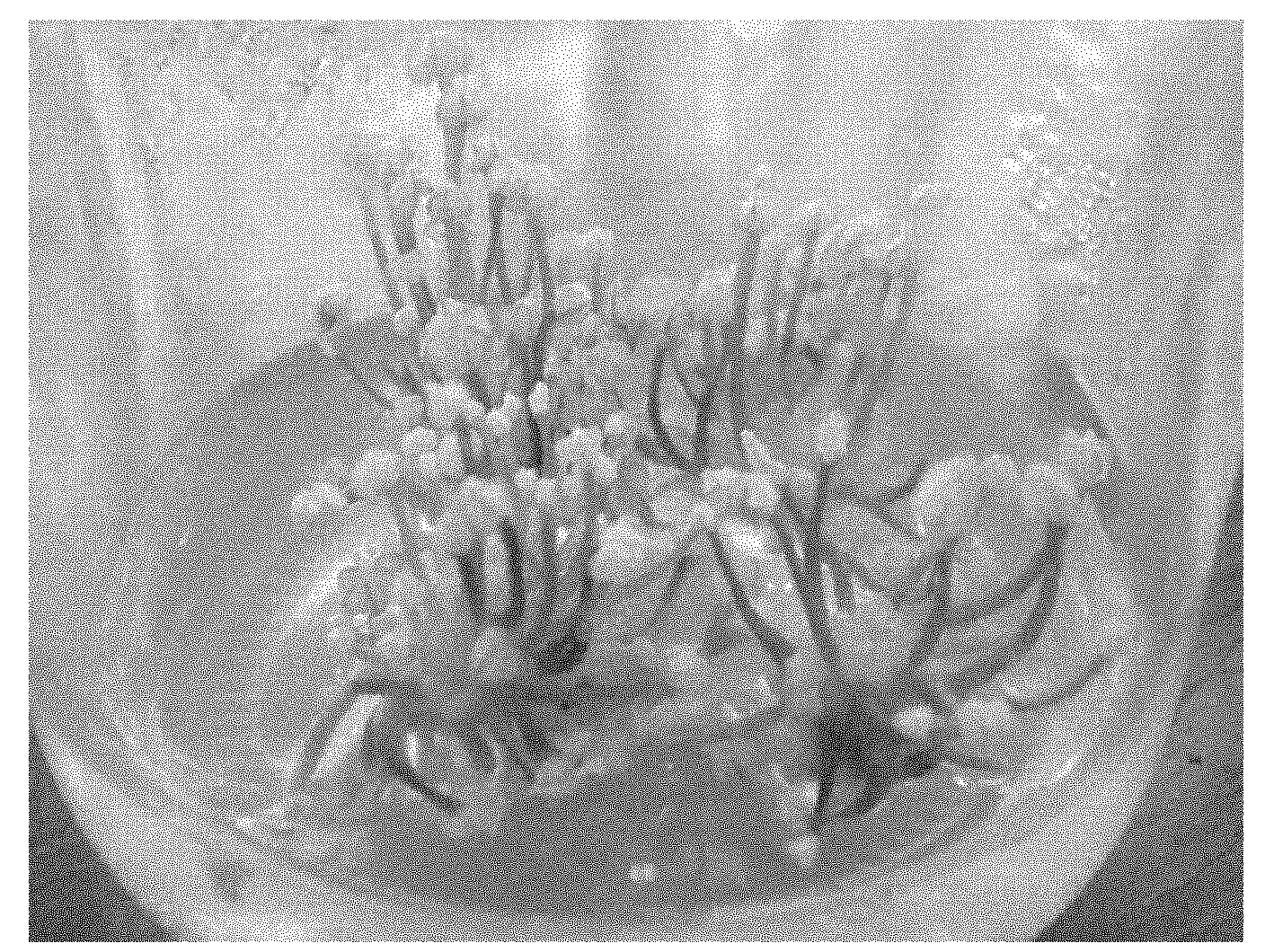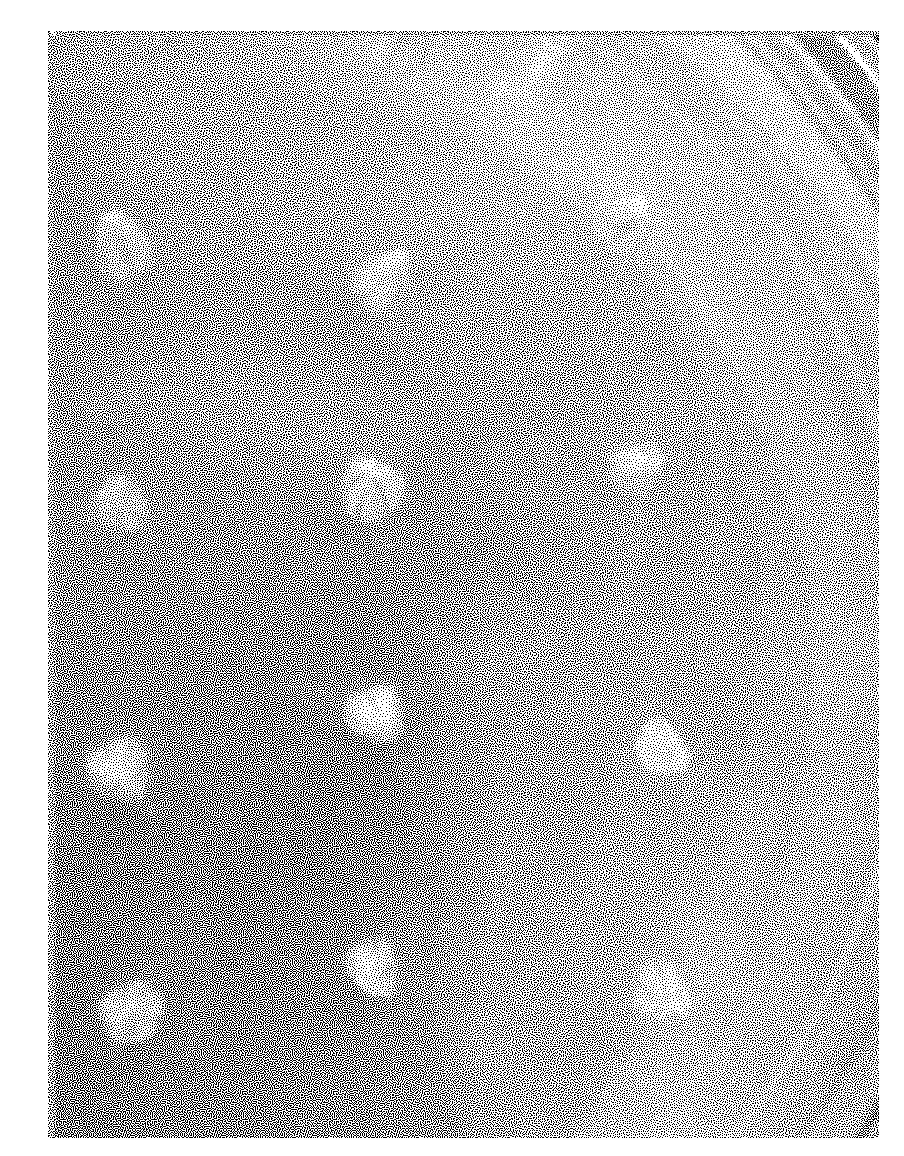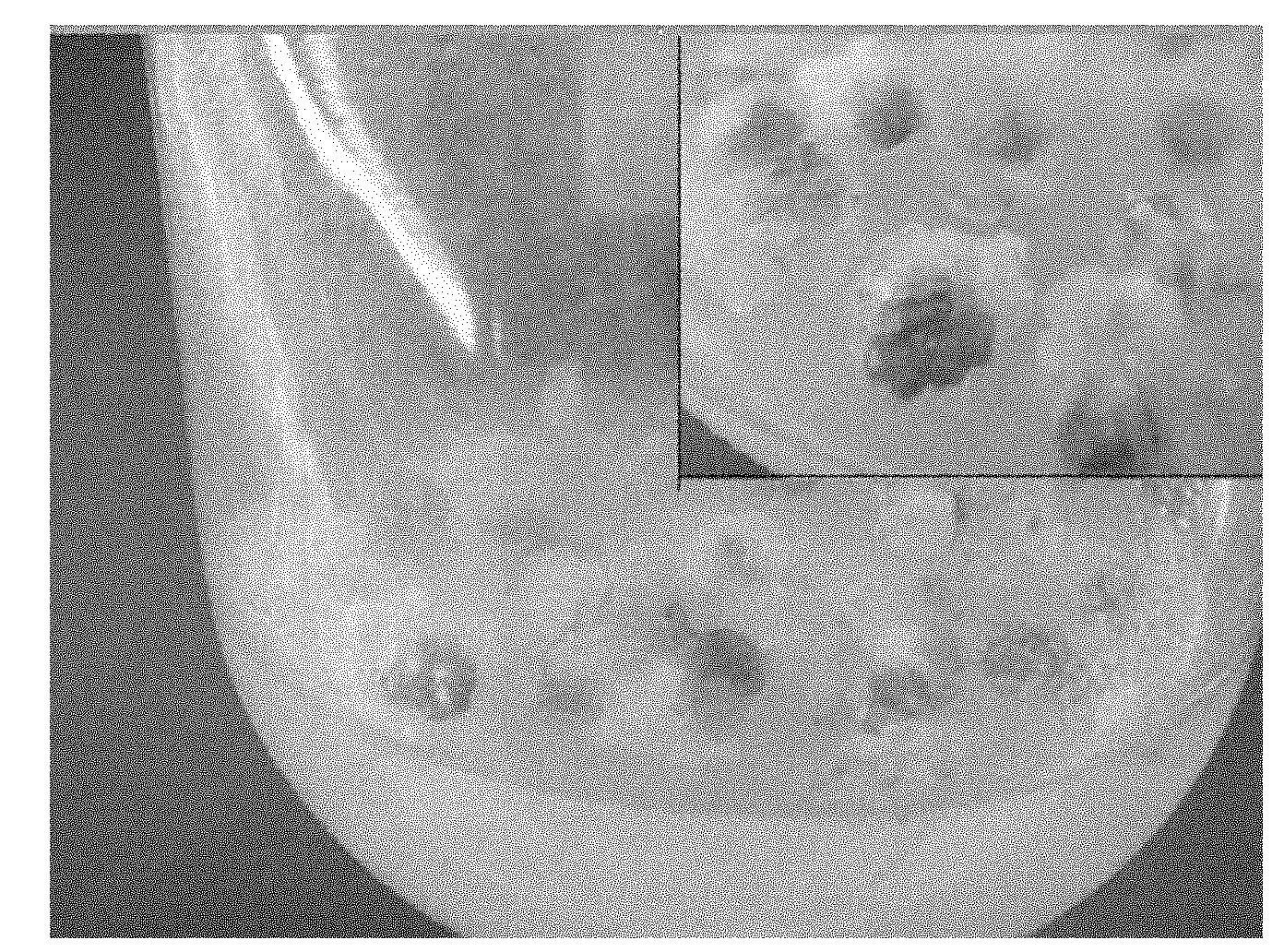Onion callus induction method and special culture medium thereof
A technology of callus induction and callus, applied in the field of plant tissue culture, can solve problems such as no practical application, and achieve the effects of increased induction rate, low pollution rate, and simple and convenient disinfection and sterilization methods
- Summary
- Abstract
- Description
- Claims
- Application Information
AI Technical Summary
Problems solved by technology
Method used
Image
Examples
Embodiment 1
[0025] 1.1 Obtaining sterile materials
[0026] The onion material used in the experiment was taken from the experimental base of the College of Horticulture, Nanjing Agricultural University, and the variety was "9866". Use young inflorescences with a diameter of about 0.8-1.2cm, after tearing off the involucre, cut it into 6-8 small pieces together with the inflorescence axis as explants, numbering A; For the uncracked inflorescence, the young bud with a short stalk (0.1-0.3cm) is used as the explant, number B; for the inflorescence with a diameter of about 3.0cm that has been cracked by the involucre, whichever has a short stalk (0.1-0.3cm) young buds are explants, coded C.
[0027] Sterilize the inflorescence first, then tear off the involucre, and take explants A and B respectively. The young buds with short stalks were taken and sterilized to obtain explant C. For disinfection and sterilization, first rinse with tap water for 0.5h, rinse to remove impurities, disinfect...
Embodiment 2
[0047] Medium formula: B5 with a sucrose concentration of 30g / L, an agar concentration of 8g / L, and a pH value of 5.8 was used as the basic medium, and 1.0mg / L 2,4-D and 1.0mg / L 6-BA were added.
[0048] Take young onion inflorescences with a diameter of about 1 cm, disinfect and sterilize (first rinse with tap water for 0.5 h, rinse off impurities, disinfect with 70% alcohol for 1 min, then disinfect with 0.1% mercuric chloride for 10 min, and rinse with sterile water for 3 min. ~5 times.), after tearing off the involucral integument, cut it into 6-8 small pieces together with the inflorescence rachis as explant A, and inoculate the obtained sterile material explant A on the medium.
[0049] Place the inoculated petri dish at a temperature of 25±1°C and a light time of 16h.d -1 , with an illumination intensity of 50 μmol m -2 ·s -1 cultivated under conditions.
[0050] It can be observed that after inoculation, the base of the inflorescence rachis and the young buds grow u...
Embodiment 3
[0052] Medium formula: B5 with a sucrose concentration of 30g / L, an agar concentration of 8g / L, and a pH value of 5.8 was used as the basic medium, and 1.0mg / L 2,4-D and 1.0mg / L 6-BA were added.
[0053] Take the uncracked inflorescences of the involucre with a diameter of about 1.5-2.0 cm, and sterilize (wash with tap water for 0.5 h first, rinse off impurities, sterilize with 70% alcohol for 1 min, then sterilize with 0.1% mercuric chloride for 10 min, then Rinse 3 to 5 times with sterile water.), after tearing off the involucre, take the young bud with a short stalk (0.1-0.3cm) as explant B, and the obtained sterile material explant B inoculated on the medium.
[0054] Place the inoculated petri dish at a temperature of 25±1°C and a light time of 16h.d -1 , with an illumination intensity of 50 μmol m -2 ·s -1 cultivated under conditions.
[0055] It can be observed that the growth is slow after inoculation, some flower buds are opened, and a yellowish callus appears aft...
PUM
 Login to View More
Login to View More Abstract
Description
Claims
Application Information
 Login to View More
Login to View More - R&D
- Intellectual Property
- Life Sciences
- Materials
- Tech Scout
- Unparalleled Data Quality
- Higher Quality Content
- 60% Fewer Hallucinations
Browse by: Latest US Patents, China's latest patents, Technical Efficacy Thesaurus, Application Domain, Technology Topic, Popular Technical Reports.
© 2025 PatSnap. All rights reserved.Legal|Privacy policy|Modern Slavery Act Transparency Statement|Sitemap|About US| Contact US: help@patsnap.com



